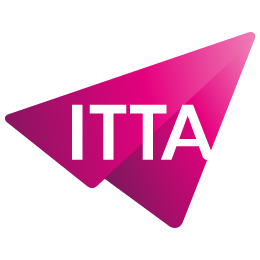Home > Trainings > Soft Skills > Team and People Management > Intergenerational Management, Diversity and Inclusion
In a context where professional dynamics are rapidly evolving, organizations must learn to leverage the diversity of profiles and generations. Intergenerational management is becoming a strategic lever to strengthen cohesion, stimulate innovation, and ensure overall performance. This course offers a practical and human-centered approach to intergenerational management, integrating diversity and inclusion as core elements of managerial practices.
Managers now lead teams made up of individuals with different expectations, values, and communication styles. Understanding these differences helps create a sustainable climate of trust. This management training provides practical tools to adapt leadership posture, engage talent, and build an environment where every generation finds its place and contributes fully to a shared vision.
Module 1: Adopting an Inclusive Management Posture
Module 2: Managing in a Heterogeneous Environment
Module 3: Recognizing and Managing Unconscious Bias
Module 4: Creating a Trust-Based Environment
Module 5: Rethinking Decision-Making
Module 6: Promoting Daily Inclusion
Intergenerational management is no longer an optional skill but a strategic necessity. Today, organizations bring together up to four generations within the same team, each with its own motivations, priorities, and relationship to work. A one-size-fits-all management style can no longer meet the varied expectations of these profiles. It is essential to adopt a flexible approach that promotes cohesion while recognizing individual strengths. By incorporating diversity and inclusion practices, managers build trust, increase engagement, and foster true collective intelligence.
One of the major challenges lies in creating a workplace where every generation feels valued and heard. More experienced employees seek recognition of their expertise, while younger generations expect meaningful work and immediate feedback. The role of the manager is to align these expectations around a common purpose. This requires clear communication, active listening, and the implementation of collaborative routines. An inclusive environment reduces tensions, enhances team performance, and drives innovation.
In intergenerational management, a single leadership style is not sufficient. Managers must adjust their approach, being directive in some contexts and collaborative in others. Understanding what motivates each generation allows for personalized interactions without creating perceptions of favoritism. An agile and inclusive leadership style promotes alignment with decisions and ensures smoother management of organizational changes. This behavioral flexibility strengthens managerial credibility and team trust.
Diversity in age, background, or culture is a true asset for an organization. Each generation contributes a unique perspective, adaptability, or technical expertise. When recognized and promoted, these differences become a driver of competitiveness. Intergenerational management aims to transform diversity into a catalyst for collaboration by highlighting complementary strengths and encouraging cross-functional projects. This approach fosters accountability and stimulates innovation.
Intergenerational tensions often arise from misunderstandings or unconscious biases. Active listening and rephrasing are essential tools to avoid miscommunication. Inclusive communication ensures messages are clear and accessible to all profiles. It strengthens trust, improves team cohesion, and builds a shared sense of belonging. Managers must pay attention to subtle signals and adapt their language to encourage involvement from every team member.
Organizations are evolving quickly, and teams must constantly adapt. Intergenerational management supports change by reducing resistance and creating alignment. Involving employees in decision-making and explaining the purpose of change increases collective commitment. This approach empowers teams and encourages the emergence of innovative solutions. Agility becomes a shared mindset rather than an imposed requirement.
Effective intergenerational management enables the balance between operational performance and employee well-being. When individuals feel respected and valued, they contribute more actively to the team’s success. Organizations benefit from stronger engagement, increased loyalty, and enhanced attractiveness. Diversity becomes a factor of stability and long-term performance rather than a challenge to overcome.
What is intergenerational management?
It is a management approach that recognizes the specific needs of different generations to foster collaboration and collective performance.
Why is it essential today?
Teams are increasingly diverse in age and expectations. An adapted management approach improves cohesion and efficiency.
What are the benefits for an organization?
Improved communication, reduced conflict, greater innovation, and increased employee engagement.
Is this training only for managers?
No, it is intended for anyone working within diverse teams or seeking to develop their leadership skills.
What concrete outcomes can be expected?
A stronger managerial posture, enhanced team engagement, and a measurable improvement in workplace culture.

Nous utilisons des cookies afin de vous garantir une expérience de navigation fluide, agréable et entièrement sécurisée sur notre site. Ces cookies nous permettent d’analyser et d’améliorer nos services en continu, afin de mieux répondre à vos attentes.
Monday to Friday
8:30 AM to 6:00 PM
Tel. 058 307 73 00
ITTA
Route des jeunes 35
1227 Carouge, Suisse
Monday to Friday, from 8:30 am to 06:00 pm.